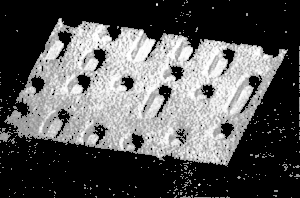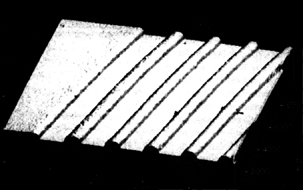Disk Properties
Significant improvements over past music storage formats can be explored by looking at the minidisc cassette. The diagram on the left shows an explodeded view of the cassette. The disc itself is fairly similar to a compact
disc, the major improvement being the housing that protects it from the same damage susceptible to the unshielded CD.
The most interesting part of the minidisc, however, is its recordable layer sandwiched in the plastics of the disc. This layer is a Terbium-Iron-Cobalt-Chromium composite and was chosen for several reasons. Primarily, the composites magnetic coercivity at room temperature is very high. Magnetic coercivity is the measure of a materials resistance to magnetic induction. For example, a VHS tape has a magnetic coercivity of 760
This cross-section depicts the various layers of the minidisc. The layer 2nd from the bottom is the Terbium-Iron-Cobalt-Chromium recording layer.
Diagram From: members.rol.ch/ruby/sprinterx.html

